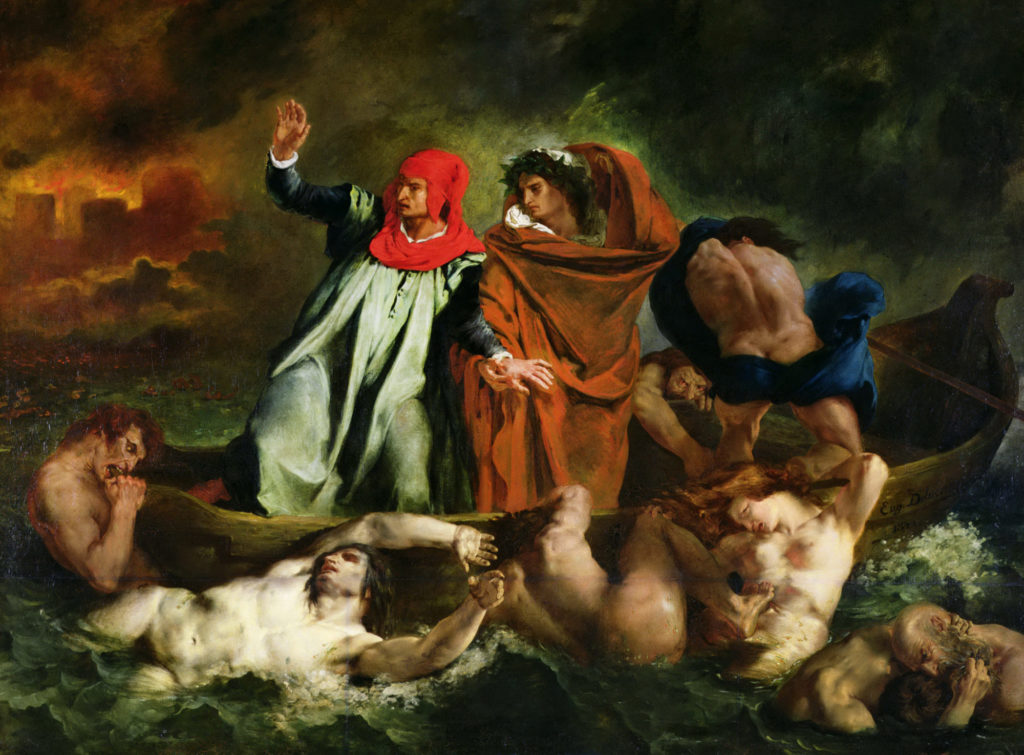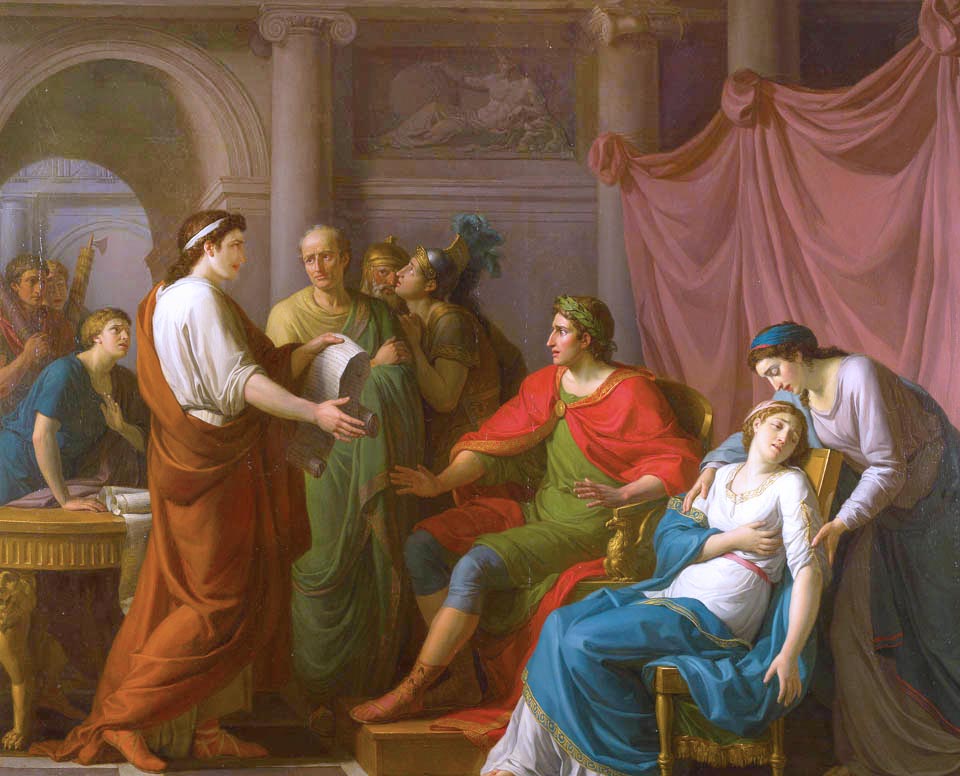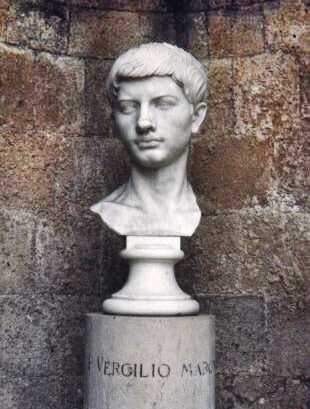Publius Vergilius Maro, who lived from 70-19 BC, is one of the great names in Western literature. He is still connected in numerous ways to modern-day Naples. He is associated with the ancient Castel dell’Ovo and if you drive through the Mergellina Tunnel on the way to Fuorigrotta, you pass within a stone’s throw of a Roman tunnel. It was one of a few Roman tunnels, all major feats of engineering at the time, built to get in and out of Naples. Legend has it that Virgil conjured the tunnel into existence by his powers of sorcery. The Mergellina entrance to the tunnel is now on the premises of an historical site called Virgil’s Tomb. If you wander down to the sea near Cape Posillipo, you can see the remains of what, over the centuries, has been called “The Sorcerer’s House,” meaning Virgil.
Virgil was born near Mantua in the present region of Lombardy. His father was a prosperous farmer who sent his son to study in Rome. Virgil returned home to study Greek philosophy and poetry on his own and began to write poetry that came to the notice of Gaius Cilnius Maecenus, a friend and advisor to Octavius, later to become Augustus Caesar.
Under the patronage of Maecenus, Virgil published a collection of idyllic poetry called Bucolica or “The Bucolics.” As the title implies, they were filled with a spirit of nostalgia and a longing for a simpler time. This was understandable when one considers the time frame. Virgil was a young man when Julius Caesar was assassinated, an event that almost tore the Roman world apart. That episode came on the heels of nearly a half century of great unrest. Rome was not yet the Roman Empire and events at the time seemed to be coursing out of control.

There are ten pastoral poems in the Bucolica, one of which contains the secret as to why Virgil was held in such high, magical esteem by Italians in the Middle Ages. It is Eclogue number four, the so-called Messianic Eclogue, in which Virgil predicts a new age of peace for the world, ushered in by the birth of a child. Medieval Christian scholars saw this as a prediction of the birth of Christ. No doubt, this is one of the reasons that Dante chose Virgil to be his guide through Hell and Purgatory in “La Divina Commedia” and no doubt why Virgil did not share the fate of many Roman writers who were maligned by Christian scholars in the centuries following the Fall of Rome.
When Octavius prevailed and the Roman Empire gained momentum, Virgil moved to the Campania region to the town of Nola, near Naples. Here Virgil wrote the Georgics, a hymn of praise to the farmer. It was another bit of nostalgia about a simpler, happier time. It was also full of hope that the reign of the new Emperor, Augustus, would mark the beginning of a time of long awaited peace. The Georgics are marked by an extraordinary upbeat ending, one of regeneration and resurrection, told in the form of an allegory of honey-bees emerging from sacrificed cattle. At the end of the last Georgic, Virgil makes a famous reference to Naples and describes himself as having been nurtured in Parthenope, who followed the unknown in the pursuit of peace. Parthenope was the siren in Greek mythology who gave her name to the first settlement in what would become the Bay of Naples. To this day, Neapolitans commonly refer to themselves as Parthenopeans.

Virgil then set about immortalizing Augustus in his work Aeneas. For Romans of the day, the epic not only summed up of their history, but made the definitive statement of their aspirations. As a writer, Virgil was well attuned to his audience. It is interesting to note that all later epic poetry in the Medieval period and even as late as Paradise Lost in 1667, owes more to Virgil than to Homer. The writings of the Greeks were not rediscovered until the Renaissance and Latin translations of Homer were not completed until the mid-1500s. Thus the epic tradition that passed into and through the Middle Ages and into modern times was really based on the interpretations and writing of Virgil, rather than the form created by Homer.
Virgil took ill while on a trip and died in Brindisi in 19 BC at the age of 51. He had not finished the Aeneid and he left instructions for the work to be destroyed. The Emperor made sure that did not happen. Augustus entrusted the unfinished work to two of Virgil’s friends for editing and that is the version that passed through the centuries to Dante and to us. Virgil’s remains were returned to Naples and entombed. Whether they are in the exact spot of Virgil’s Tomb in Mergellina is irrelevant. While Matua was the place of his birth, it was Campania that was the nursery of Virgil’s genius.






